
While working at Codex Corporation in the seventies, I used to buy coffee every morning from a vending machine located on the opposite side of the company's building from my office. This was an old-fashioned machine that dropped a paper cup behind a small window in the front of the machine, and then poured your coffee into it (adding sugar or cream, as selected). For some reason, coffee mugs with caps were not much used in those days, and no caps were provided for the paper cups the machine served up (plastic caps that snap on to paper cups are commonplace today). I thus found myself having to carry my coffee back across the plant without spilling it. It was often served too hot to drink immediately. This led to my invention of the device shown to the left, made out of corrugated cardboard and string. The circle in the center of the cardboard was cut to the proper radius to hold the paper cup from the vending machine, catching it under its lip. Holding it by the string allowed it to dangle from my hand and swing freely. Because it was free to swing, it was always pointing straight "down", that is, if you consider the combination of gravity (truly straight down) and acceleration (inertial forces resulting from my motion). Thus the coffee remained in a constant position relative to the cup - it never splashed, or even moved with respect to the cup, no matter how fast I walked, rounded corners, or whatever other motion I made.
The only problem I ever had with the coffee holder was one time when I got a bit too cocky, and raced through a doorway without paying enough attention to the cup. The cup hit the door jamb, and of course, I got drenched in hot coffee. I never tried to patent the idea, or to make anything of it other than using it myself. There are several patents on similar devices, such as USA patent number 4,131,259, "Swinging cup holder", filed by Peter Franks on May 10, 1977, and issued December 26, 1978. The "Citations" and "Referenced by" lists in the patent lead you to other similar patents. You can click on a few of them and try to figure out what the differences are.
It's interesting in that it just has a flat platform for your cup or mug. It doesn't hold the cup firmly like mine does, in a circle cut out for the exact diameter of the top of the cup. Thus, unlike mine, it will accept a wide selection of cup sizes and shapes. I haven't bought one to try it out, but as long as it's allowed to swing freely, the cup ought to stay put in the center of the tray. The web site I found this on, Think Geek, is a favorite of mine, and beloved by a lot of MIT students. It has all sorts of toys for the committed techno-geek. Where else can you find giant plush microbes? My daughter Elissa gave me a stuffed salmonella last Christmas.
One very simple one that I did assemble was my pill-reminder light, shown to the right. This was featured in a previous blog entry called Disable interrupts. It's a small lamp that is turned on by a timer. The timer turns the lamp on before I wake up. I turn it off manually when I take my morning pills. And then, the next morning, it will be on again. Nothing needed to be actually built to create this device. Creating it was just a matter of combining an ordinary light timer, obtainable in any hardware store, and an equally off-the-shelf lamp. I screwed in an adapter for a low-wattage "candelabra" bulb, so the light wouldn't waste very much power in the interval between when it turns on and when I turn it off. It's positioned near the door to our garage, so I can't leave the house without seeing it. Since creating this device, I've virtually never forgotten to take my morning pills. Another idea required nothing to be created at all. It's a method of quickly distinguishing between the two different pairs of eyeglasses that I wear.
Both pairs of glasses have wire rims. For decades, I've purchased my everyday glasses with one wire between the lenses, and my computer glasses with two wires. Hence I can tell them apart with a quick glance if I'm not wearing them, or a quick touch to the bridge of my nose if I am. I have other gadgets I've built that I could write about, but I'll leave them for another entry (March 27, 2014 update: see Gadgets (bis) for three more). I do want to mention, though, that the three ideas I discussed above were submitted to, and accepted by, the "Innovation Whiteboard" of the New York Times. The following appeared in a recent issue of the New York Times on-line:
You should be able to see this page at: I submitted my three ideas using their on-line form, which allowed me to include a photograph. They shortly appeared on the page in the following form (you should be able to find them by searching on "Krakauer"): 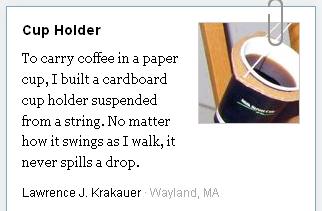  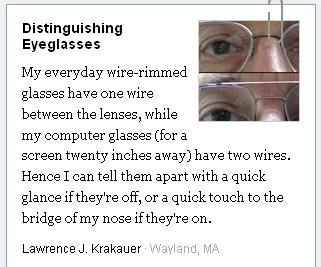   |

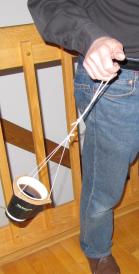
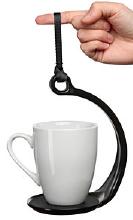 At least one commercial version now exists, called the
At least one commercial version now exists, called the 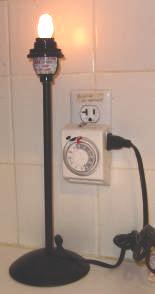 I like gadgets, and conceive of new ones all the time. I thought that in retirement, I might further develop a few with possible commercial potential, but in the end, I decided that what I really wanted was to be retired, not to go back to work (it takes a lot of effort to commercialize a product). I haven't even found the time to build many gadgets just for myself.
I like gadgets, and conceive of new ones all the time. I thought that in retirement, I might further develop a few with possible commercial potential, but in the end, I decided that what I really wanted was to be retired, not to go back to work (it takes a lot of effort to commercialize a product). I haven't even found the time to build many gadgets just for myself.
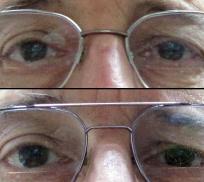 Both glasses are bifocals, which focus differently when I look through the main (upper) part of the lens, and when I look down through the lower part. One pair is for everyday use. They focus at a distance on the upper part, and close up (for reading) in the lower portion. The other pair is for sitting in front of my computer screen. The top part focuses on the screen, at a distance of about 50 cm. (20 inches), and the bottom part, again, is for reading.
Both glasses are bifocals, which focus differently when I look through the main (upper) part of the lens, and when I look down through the lower part. One pair is for everyday use. They focus at a distance on the upper part, and close up (for reading) in the lower portion. The other pair is for sitting in front of my computer screen. The top part focuses on the screen, at a distance of about 50 cm. (20 inches), and the bottom part, again, is for reading.

